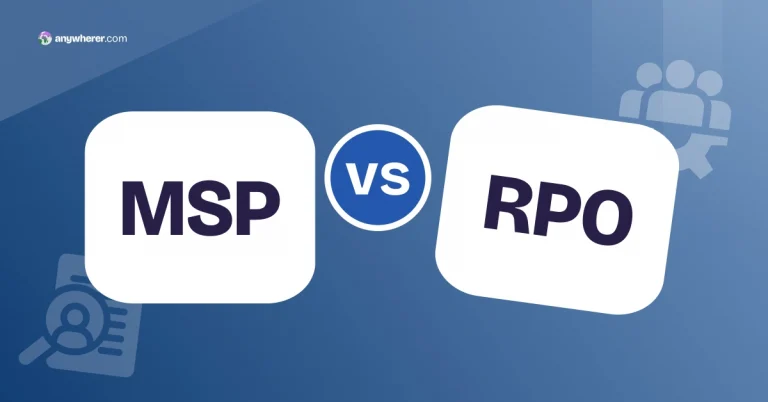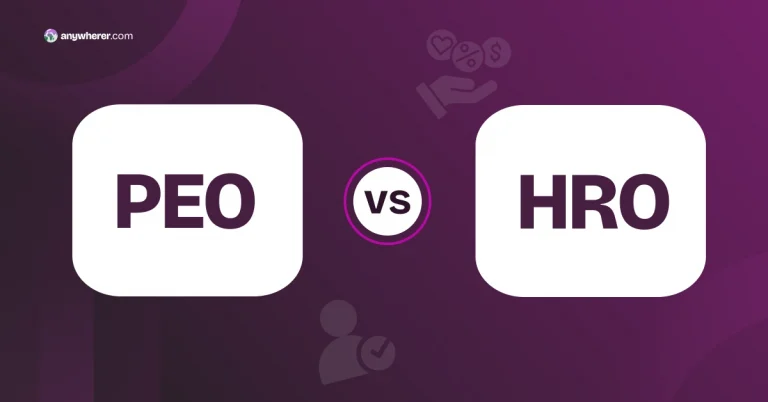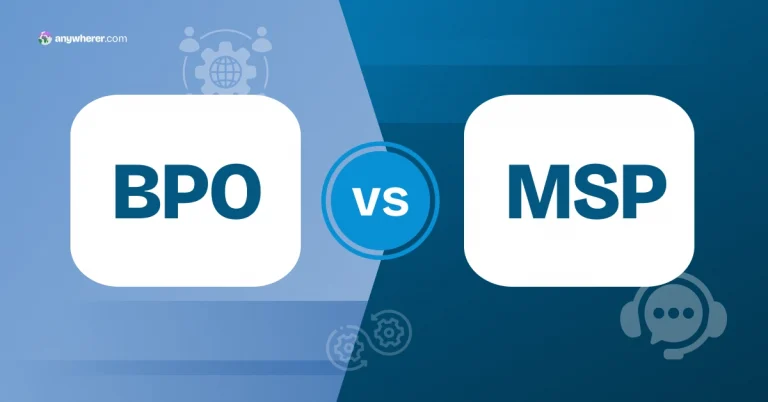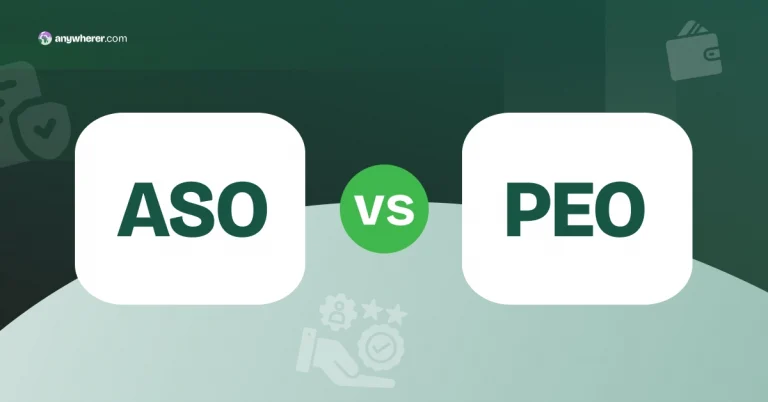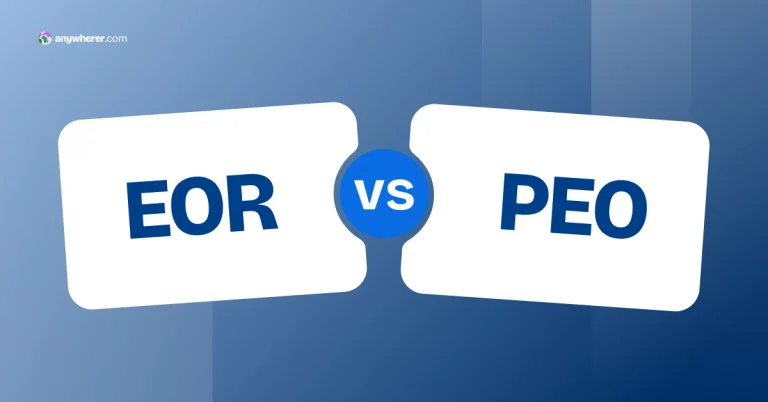Looking into an RPO vs BPO comparison? Well, these models would definitely serve a very different role in your business journey.
We’ll unpack the Recruitment and Business Process Outsourcing definition, explore how they differ, and help you figure out which model best supports your goals—whether you’re scaling fast or simplifying operations.
What Is RPO? Recruitment Process Outsourcing Uncovered
Choosing between RPO and BPO could be your next big move — let’s start with the basics. So, what is Recruitment Process Outsourcing?
RPO Definition
RPO involves a company transferring all or part of its recruitment processes to an external provider. They act as an extension of the company’s HR team, offering scalable and efficient hiring solutions tailored to the organization’s needs.
Key RPO Functions

Recruitment Strategy Development
Candidate Sourcing
Screening and Interviewing
Employer Branding
Onboarding Support
Compliance Management
What Affects the RPO Cost
How much does RPO actually cost? Well, like most things in business, it depends on factors like:
- Volume and complexity of hires
- Geographic location
- Level of service customization
- Chosen pricing model (e.g., per hire, management fee)
BPO Meaning, Core Services, and Cost Breakdown
BPO Definition
BPO is about contracting specific business functions to third-party providers. This strategy allows companies to focus on core activities while leveraging external expertise for non-core tasks.
Key BPO Functions
Customer Support and Call Centers
IT Services and Technical Support
Finance and Accounting

HR and Payroll Management
Data Entry and Processing
Marketing and Advertising
What Affects the BPO Cost
When it comes to BPO, cost is closely tied to the type of service you’re outsourcing and how much of it you need. Think:
- The type and complexity of outsourced tasks
- Volume of work
- Location of the service provider (onshore, nearshore, offshore)
- Technology and infrastructure requirements
What Is the Difference Between BPO vs RPO?
Here’s a shortcut version of the differences to help you decide between the two, laid out side by side:
BPO vs RPO: Key Differences
Comparison Factor
BPO
RPO
Focus Area
Operational tasks outside the company’s core business
Talent acquisition and hiring strategy
Typical Services
Customer support, IT services, payroll, accounting, data entry, etc.
Candidate sourcing, screening, interviews, onboarding, employer branding, etc.
Scope of Work
Broad scope – covers various back-office or customer-facing functions
Narrower scope – focused entirely on the recruitment lifecycle
Industry Application
Popular in industries like retail, telecom, logistics, and financial services
Common in tech, healthcare, finance, and manufacturing, where specialized or high-volume hiring is needed
Client Control
Varies – usually less direct control, especially in offshore or fully-managed setups
High – RPO teams often work closely with internal HR and hiring managers
Talent/Staffing Responsibility
Provider-managed – BPO staff typically remain employees of the outsourcing vendor
Shared – the RPO provider manages hiring, but staff become part of the client’s organization
Ideal for
Businesses looking to reduce operational costs and improve efficiency in non-core areas
Companies scaling quickly and needing to build strong teams efficiently
At this point, you may also be wondering about the difference between BPO vs KPO vs RPO. The difference between BPO vs KPO vs RPO comes down to what’s being outsourced. And in case of KPO (Knowledge Process Outsourcing), it’s the higher-level, knowledge-driven work like data analysis or legal research.
Key BPO vs. RPO Differences in Detail
Let’s break down the difference between BPO and RPO across five areas related to different business needs.
Scope and Specialization
If we’re talking scope, the RPO/BPO difference is crystal clear. BPO is broad—it covers customer service, finance, IT, HR, and more. Whether it’s handling invoices or managing helpdesk tickets, BPO takes over entire business functions so your team can stay focused on core work.
BPO Scope and Specialization: Key Takeaways
Focus
Common Use
Specialty
Outcome
Broad operations: IT, finance, support
Customer service, payroll, back office
Process execution at scale
Cost savings, streamlined operations
RPO is all about talent. It’s a specialized service where a third-party provider helps you source, screen, and hire candidates based on your business needs.
RPO Scope and Specialization: Key Takeaways
Focus
Common Use
Specialty
Outcome
Talent acquisition only
High-volume or niche hiring
End-to-end recruitment strategy
Better, faster hiring
Client Involvement and Control
Another big difference between outsourcing and business process outsourcing models is how hands-on the client remains.
BPO tends to be a hands-off arrangement. Once the process is outsourced, the provider takes the wheel and runs it independently.
BPO Client Involvement and Control:
Key Takeaways
Level of Involvement
Integration
Daily Contact
Works Best When
Low
The provider works independently
Limited
You want to “set it and forget it”
In contrast, RPO is more collaborative. You’re working closely with the provider, who often embeds within your HR department, aligns with your company culture, and becomes a hiring partner, not just a vendor.
RPO Client Involvement and Control:
Key Takeaways
Level of Involvement
Integration
Daily Contact
Works Best When
High
Deep collaboration with HR team
Frequent
You need strategic, aligned hiring
Talent Management Responsibility
Let’s talk about people. Who’s managing whom? In BPO/RPO, BPO providers use their own staff to complete tasks. And RPO providers recruit people to work for you—you’re the employer.
BPO and Talent Management Responsibility:
Key Differences
Talent Used
Accountability
Role of Client
Employment Model
Provider’s internal workforce
With the BPO company
Oversees outcomes, not staffing
Employees of the BPO provider
That’s one key answer to what is the difference between RPO and BPO: BPO owns the talent, RPO helps you build it.
RPO and Talent Management Responsibility:
Key Differences
Talent Used
Accountability
Role of Client
Employment Model
Hired for the client
Shared with client
Direct employer
Employees of the client
Cost Drivers and Pricing Models
In the RPO BPO comparison, BPO is priced based on volume and complexity—think cost per ticket, per invoice, or agent hour.
BPO Cost Drives and Pricing Model:
Key Takeaways
Pricing Basis
Examples
Predictability
Works Well For
Transaction volume, complexity
Per call, per document, per seat
Very high
Repetitive, measurable work
RPO, meanwhile, is tied to hiring outcomes—per hire, per job opening, or even performance-based models.
RPO Cost Drives and Pricing Model:
Key Takeaways
Pricing Basis
Examples
Predictability
Works Well For
Hiring metrics (volume, time-to-fill)
Per hire, per month, per SLA
Medium – depends on hiring needs
Growing or scaling recruitment
Ideal Use Cases
The best way to understand the difference between RPO and BPO is to look at when each one really shines.
- Choose BPO when you want to streamline support or back-office operations.
- Choose RPO when hiring is a bottleneck or a big strategic goal.
BPO Use Cases
Call center outsourcing
HR/payroll services
Invoice processing
Scalable, 24/7 coverage
Accuracy and compliance
Speed and efficiency
While BPO is all about optimizing day-to-day operations, RPO steps in when people, not processes, are the priority. If your biggest challenge is building the right team quickly and efficiently, this is where RPO shines.
RPO Use Cases
Rapid growth phases
Seasonal recruitment surges
Hard-to-fill technical roles
Speed up hiring
Scalable team extension
Access to niche talent pools
What Are Some of the Leading RPO and BPO Providers?
When considering outsourcing, it helps to know which providers are already trusted by companies worldwide. Let’s take a quick look at some of the top RPO companies and top BPO providers.
Notable BPO Providers

Offers end-to-end outsourcing services, focusing heavily on innovation, digital transformation, and long-term client partnerships.

A technology-driven BPO provider with a strong presence in banking, healthcare, and insurance sectors.

Specializes in transforming business processes for clients across finance, supply chain, and analytics.

Delivers a wide range of BPO services with an emphasis on digital transformation.

Best known for multilingual call centers, tech support, and omnichannel customer care.
Prominent RPO Providers

A global giant in HR and payroll, ADP also offers RPO solutions tailored to companies of all sizes.

They offer flexible RPO models and specialize in building talent pipelines from scratch.

Helps U.S.-based companies recruit remote talent from Latin America.

They combine automation with hands-on sourcing to accelerate time-to-hire and improve candidate quality.

Focuses on high-growth startups and SaaS companies.
Final Thoughts: Choosing the Right Model
So, what is the difference between BPO and RPO? While RPO and BPO share the same goal—efficiency through expertise—they serve distinct purposes. Some companies even use them together: BPO for operational tasks, RPO for talent acquisition.
The choice between RPO vs BPO depends on your specific goals. If you need to build a strong internal team fast, RPO is your go-to. If you want to offload day-to-day operations and boost efficiency, BPO may be a better fit.
Whether you’re a fast-growing startup or an established enterprise, the key is to choose the right partner and model that aligns with your current challenges and long-term goals.
FAQ about BPO RPO Differences
What is the main difference between RPO and BPO?
The core one is that RPO is all about letting recruitment pros take over your hiring so they can find the best people for your team. BPO, on the other hand? It’s when you outsource everyday business stuff — like payroll, customer support, or IT — to another company. In short: RPO = hiring help, BPO = broader business support.
Can a company use both RPO and BPO at the same time?
Absolutely! Lots of companies do. You might use RPO to grow your team fast, and BPO to handle things like accounting or tech support. It’s a smart way to stay flexible as your business grows.
Which model is better for fast-growing startups?
Startups that are scaling quickly often go for RPO — it helps them hire fast without burning out their HR team. But BPO can also come in handy when they want to free up time by offloading repetitive tasks.
Is one model more cost-effective than the other?
It depends on your goals. RPO can cut hiring costs by speeding things up and improving candidate quality. BPO helps save money on operations by outsourcing routine tasks to experts who do it efficiently.
What industries benefit most from RPO or BPO?
The RPO/BPO industry difference is that ones like tech, healthcare, and finance often lean on RPO to find top talent quickly. BPO is popular in sectors like customer service, logistics, and finance—basically any area where outsourcing routine tasks can free up internal resources.
RPO vs. MSP. vs. BPO what is the difference?
Think of it this way: RPO is for recruiting and building your team. BPO handles full business functions like payroll or support. MSP (Managed Service Provider) is all about managing external workers — freelancers, contractors, temps — and often coordinating with staffing vendors too.
Explore the RPO vs BPO comparison to decide which is more suitable for your business. Or maybe both?

Yaryna is our lead writer with over 8 years of experience in crafting clear, compelling, and insightful content. Specializing in global employment and EOR solutions, she simplifies complex concepts to help businesses expand their remote teams with confidence. With a strong background working alongside diverse product and software teams, Yaryna brings a tech-savvy perspective to her writing, delivering both in-depth analysis and valuable insights.

